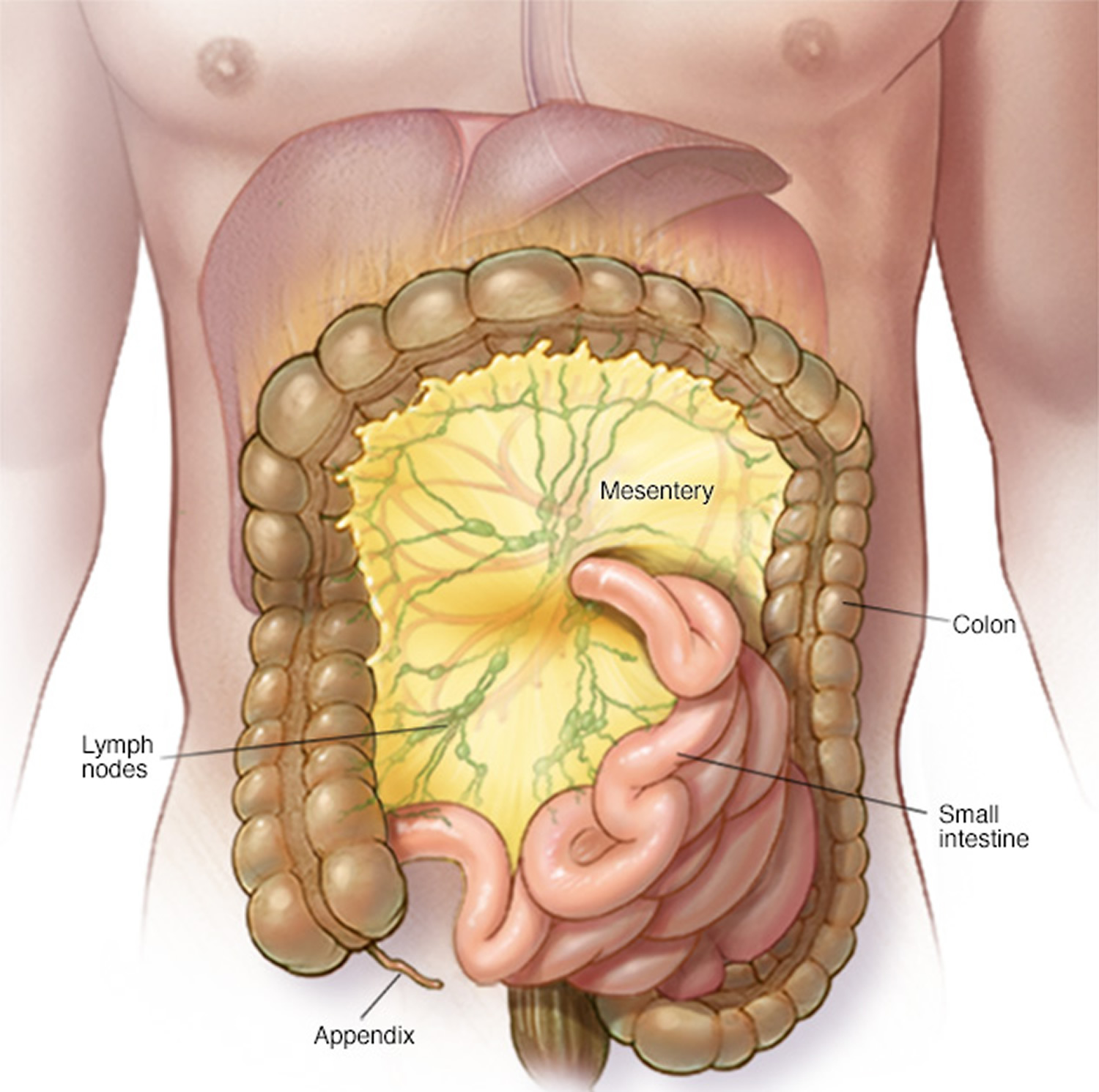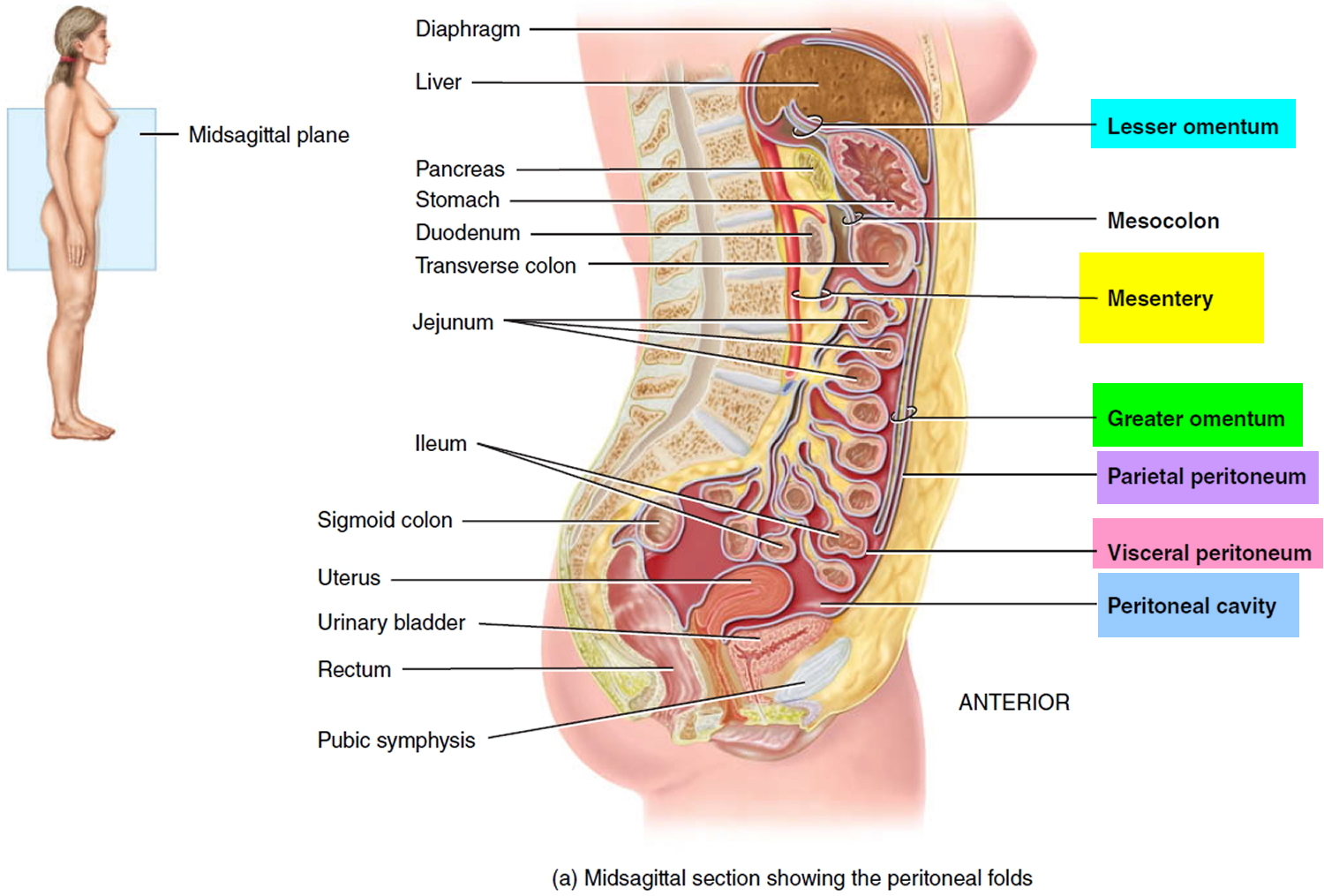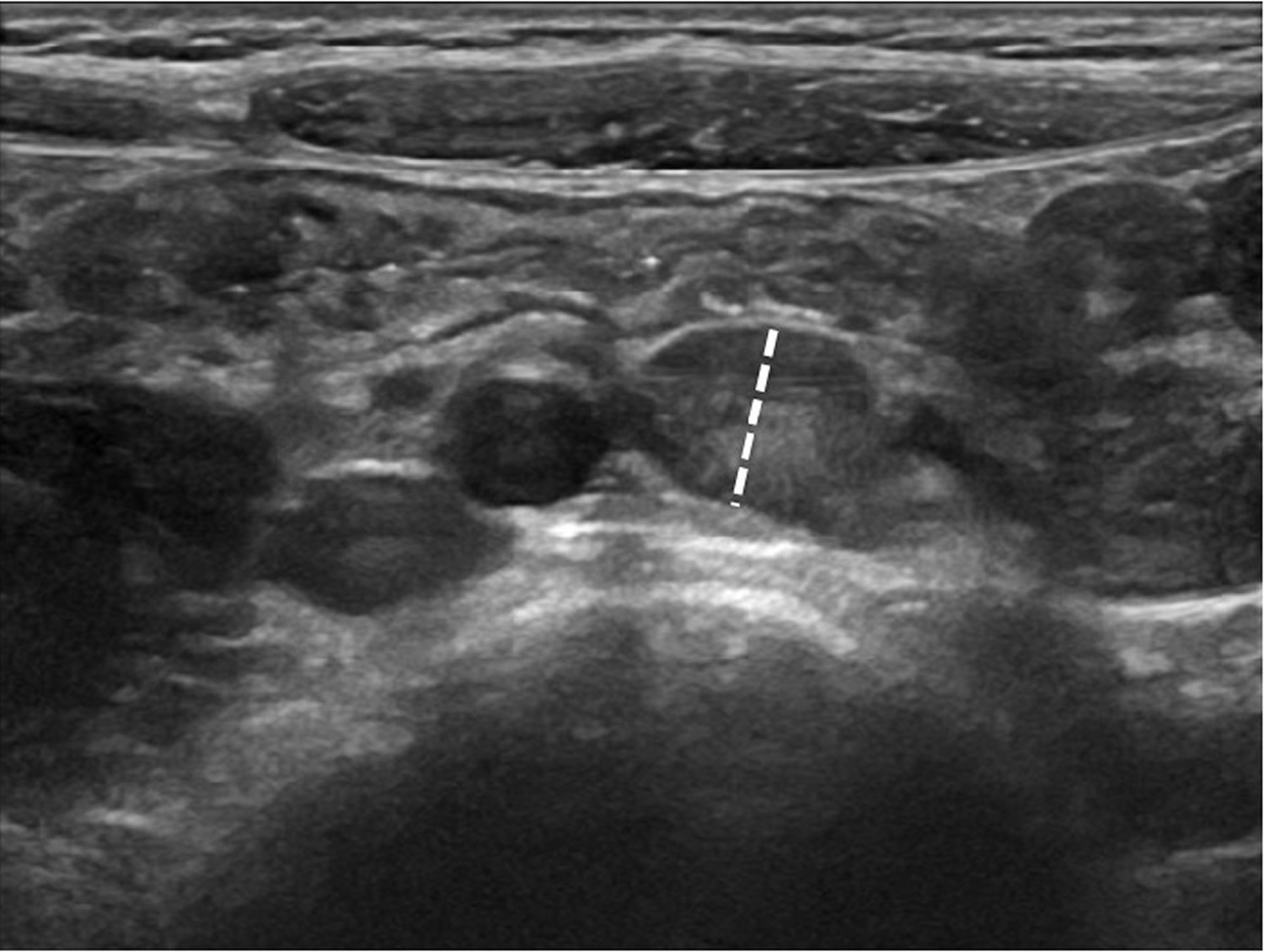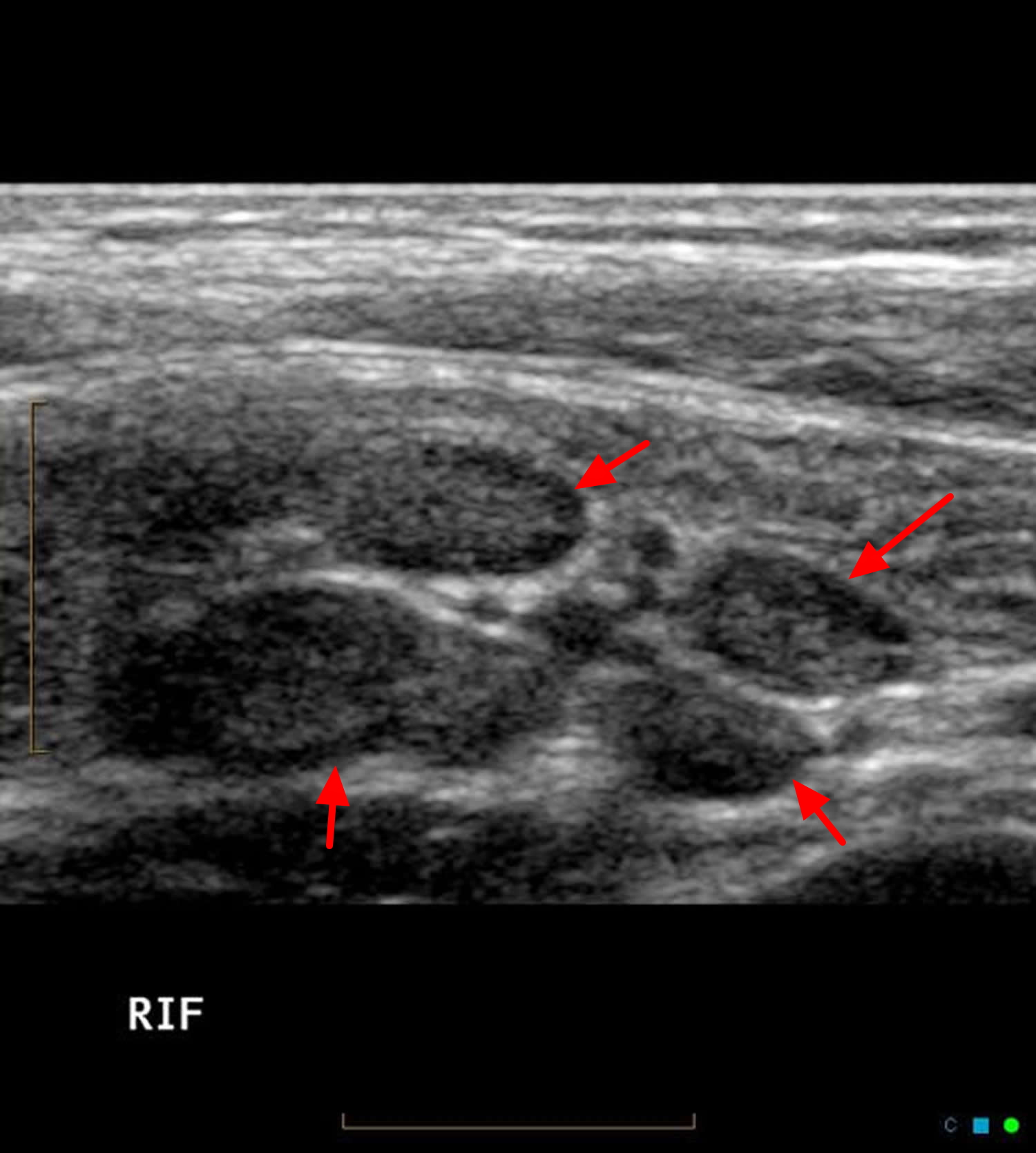Contents
What is mesenteric adenitis
Mesenteric adenitis (also called mesenteric lymphadenitis) is inflammation of the lymph nodes in the membrane that connects your bowel to the abdominal wall (mesentery).
Mesenteric adenitis can be divided into two groups: nonspecific (or primary) and secondary 1.
- Primary mesenteric adenitis is a lymphadenopathy, mostly right-sided, without an identifiable acute inflammatory process. Primary mesenteric adenitis is most common in children and adolescents although it may occasionally affect adults.
- Secondary mesenteric adenitis is associated with a detectable intraabdominal inflammatory process.
Mesenteric adenitis typically occurs in children, adolescents, and young adults of both sexes, although males might be slightly more frequently affected than females 2, 3. Mesenteric adenitis is likely more common than acute appendicitis in the first decade of life 2, 3. Acute appendicitis becomes more frequent in the second decade, whilst mesenteric adenitis is distinctly uncommon after the age of 20 years.
Mesenteric adenitis usually results from an intestinal infection. It mainly affects children and teens. This painful condition can mimic the warning signs of appendicitis. Unlike appendicitis, mesenteric lymphadenitis is seldom serious and usually clears up on its own.
How long does mesenteric adenitis last
- Primary acute mesenteric adenitis is self-limiting: it is assumed but not proven that abdominal pain disappears within 2-3 weeks 4.
Abdominal pain is common in children and teens, and it can be hard to know when it’s a problem that needs medical attention.
In general, see your doctor right away if your child has episodes of:
- Sudden, severe abdominal pain
- Abdominal pain with fever
- Abdominal pain with diarrhea or vomiting
In addition, call your doctor if your child has episodes of the following signs and symptoms that don’t get better over a short time:
- Abdominal pain with a change in bowel habits
- Abdominal pain with loss of appetite (anorexia)
- Abdominal pain that interferes with sleep
The mesentery
The peritoneum is the largest serous membrane of the body; it consists of a layer of simple squamous epithelium (mesothelium) with an underlying supporting layer of areolar connective tissue. The peritoneum is divided into the parietal peritoneum, which lines the wall of the abdominal cavity, and the visceral peritoneum, which covers some of the organs in the cavity and is their serosa. The slim space containing lubricating serous fluid that is between the parietal and visceral portions of the peritoneum is called the peritoneal cavity.
The mesentery is a fan-shaped fold of the peritoneum that binds the jejunum and ileum of the small intestine to the posterior abdominal wall. This is the most massive peritoneal fold, is typically laden with fat, and contributes extensively to the large abdomen in obese individuals. It extends from the posterior abdominal wall to wrap around the small intestine and then returns to its origin, forming a double layered structure. Between the two layers are blood and lymphatic vessels and lymph nodes.
Figure 1. Mesenteric adenitis
Mesenteric adenitis causes
The most common cause of swollen mesenteric adenitis is a viral infection, such as gastroenteritis — often called stomach flu. This infection causes the lymph nodes in the mesentery — the thin tissue that attaches your intestine to the back of your abdominal wall — to become inflamed.
Your lymph nodes play a vital role in your body’s ability to fight off illness. They’re scattered throughout your body to trap and destroy viruses, bacteria and other harmful organisms. In the process, the nodes closest to the infection can become sore and swollen — for instance, the lymph nodes in your neck may swell when you have a sore throat. Other nodes that commonly swell are located under your chin and in your armpits and groin.
Some children develop an upper respiratory infection before or during a bout of mesenteric adenitis. Experts think there may be a link between the two.
Primary or nonspecific mesenteric adenitis
Primary or nonspecific mesenteric adenitis has been usually defined as right-sided lymphadenopathy without an identifiable underlying inflammatory cause. In these patients, there are no further imaging abnormalities, except for a slight thickening of the terminal ileum wall and cecum in a minority of cases 5.
Acute nonspecific or primary, mesenteric adenitis is a self-limiting inflammatory condition affecting the mesenteric lymph nodes 4. Primary mesenteric adenitis is a self-limiting inflammatory process that affects the mesenteric lymph nodes in the right lower quadrant, and is clinically often mistaken for acute appendicitis or intussusception. Acute nonspecific mesenteric adenitis typically occurs in children, adolescents, and young adults. White blood count and C-reactive protein are of limited usefulness in distinguishing between patients with and without mesenteric adenitis. Ultrasonography, the mainstay of diagnosis, discloses 3 or more mesenteric lymph nodes with a short-axis diameter of 8 mm or more without any identifiable underlying inflammatory process. Recently performed imaging studies among subjects with suspected appendicitis or intussusception confirm that acute mesenteric lymphadenitis is the most frequent alternative diagnosis 6.
Secondary mesenteric adenitis
Appendicitis, inflammatory bowel diseases, and, more rarely, systemic chronic inflammatory diseases such as systemic lupus erythematosus (SLE), sarcoidosis, and chronic granulomatous disease are causes of secondary mesenteric adenitis.
Causes of Mesenteric Lymphadenopathy other than Acute Nonspecific Mesenteric Lymphadenitis in Children, Adolescents, and Young Adults
Acute Presentation
- Appendicitis
- Secondary mesenteric adenitis of infectious origin
- Zoonotic infections: yersiniosis (Yersinia enterocolitica or pseudotuberculosis) and nontyphoidal Salmonella infection
- Enteric fever
- Infectious mononucleosis (Epstein-Barr virus, Toxoplasma gondii, and Bartonella henselae)
- Helicobacter jejuni
- Campylobacter jejuni
- Salmonella spp
- Shigella spp
- Variety of viruses
Pathogens are thought to gain access via intestinal lymphatics, and then multiply in mesenteric lymph nodes. On gross pathology, lymph nodes are enlarged and soft. On microscopy, there is non-specific hyperplasia and when suppurative, there is necrosis and pus.
Yersinia enterocolitia is considered the most common pathogen in temperate Europe, North America and Australia. It is more common in boys.
Occasionally in young children and infants, ileocolitis may be also present suggesting that the lymph node involvement may be secondary to a primary enteric pathogen.
Chronic (or Subacute) Presentation
- Inflammatory bowel diseases
- Systemic chronic inflammatory diseases (e.g., systemic lupus erythematosus, and sarcoidosis)
- Malignancy
- HIV infection
- Tuberculosis
Finally, contrary to common belief, there is no connection between celiac disease and mesenteric adenitis 4. In most cases of mesenteric adenitis, an underlying viral infectious terminal ileitis is thought to be the cause. Mesenteric adenitis has also been observed in the context of well-defined zoonotic infections such as yersiniosis (caused either by Yersinia enterocolitica or by Yersinia pseudotuberculosis) and nontyphoidal Salmonella infection. Doctors recommend stool testing for these germs exclusively if mesenteric adenitis follows or occurs in association with a diarrheal disease (especially if bloody) 4. Rarely, mesenteric adenitis has also been associated with enteric fever and Epstein-Barr virus, Toxoplasma gondii, or Bartonella henselae infection. Doctors advise testing for these causes of glandular fever if mesenteric adenitis is associated with findings such as swollen cervical lymph nodes, sore throat, splenomegaly or hepatomegaly, and peripheral blood absolute or atypical lymphocytosis. Finally, mesenteric adenitis has also been observed in HIV patients 4.
Mesenteric adenitis complications
If swollen lymph nodes are caused by a serious bacterial infection that isn’t treated, the bacteria could spread to your bloodstream, causing a potentially life-threatening infection (sepsis).
Mesenteric adenitis symptoms
Mesenteric adenitis often follows or occurs in association with an upper respiratory illness. Relevant symptoms and signs of mesenteric adenitis may include the following 2, 3:
- Fever ranges between 100.4 °F (38 °C) and 101.3 °F (38.5°C), vomiting, and shifts in stool frequency and consistency are frequently reported.
- Abdominal pain is usually severe, but, as a rule, the patient does not appear to be severely prostrated. The character of abdominal pain varies from a discomfort to a severe colic. The distribution of pain, like that of appendicitis, is felt both in the periumbilical region and in the right iliac fossa (on the lower right side), but the pain can sometimes be more widespread
- Abdominal tenderness is maximal in the right iliac fossa but is often present higher up towards the epigastrium (although this is also a not uncommon site of pain in appendicitis). The degree of abdominal tenderness is noticeably less in mesenteric adenitis than in appendicitis and the pressure of the hand will be tolerated by a child suffering from mesenteric adenitis in a manner not to be found in one with an inflamed appendix. The tenderness is also felt more deeply in mesenteric adenitis. In mesenteric adenitis, the area of pain tends to shift when the child is moved from side to side (this is in contrast with the more fixed area of tenderness in appendicitis). Rebound tenderness is present also in about one-quarter of the patients 2, 3 with mesenteric adenitis (probably being due to involvement of the overlying mesentery). True abdominal rigidity is usually absent.
Depending on what’s causing mesenteric adenitis, other signs and symptoms may include:
- Diarrhea
- Nausea and vomiting
- General feeling of being unwell (malaise)
Mesenteric adenitis diagnosis
To diagnosis your child’s condition, your doctor is likely to:
- Perform an exam and take your child’s medical history. Your doctor will give your child a physical exam and gather details about his or her signs and symptoms. Your doctor likely will ask about any other medical conditions for which your child has been treated.
- Request laboratory tests. Certain blood tests can help determine whether your child has an infection and what type of infection it is.
- Order imaging studies. A computerized tomography (CT) scan of your child’s abdomen can help differentiate between appendicitis and mesenteric lymphadenitis. Abdominal ultrasound also may be used.
Mesenteric adenitis radiology
As mesenteric adenitis usually presents in the young, ultrasound is often the investigation of choice. CT scan is usually reserved for older patients, if needed at all.
Features on either modality include:
- Enlarged lymph nodes
- Ileal or ileocecal wall thickening may be present
- wall is thicker than 3 mm over at least 5 cm of the bowel despite bowel lumen opacification (CT) and distention
- A normal appendix (if able to be identified)
Figure 3. Mesenteric adenitis (abdominal ultrasound showing large hypoechoic mesenteric lymph nodes in a 6-year-old girl with acute nonspecific mesenteric lymphadenitis. The largest mesenteric lymph node short-axis diameter [dashed line] measurement was 9 mm)
[Source 9]Figure 4. Mesenteric adenitis (abdominal ultrasound showing large hypoechoic mesenteric lymph nodes)
Mesenteric adenitis treatment
Acute mesenteric adenitis is self-limiting: it is assumed but not proven that abdominal pain disappears within 2-3 weeks. However, further studies are required to better delineate the natural history of mesenteric adenitis. Mild, uncomplicated cases of mesenteric adenitis and those caused by a virus usually go away on their own. Once the diagnosis is definitely established, supportive care including hydration and pain medication with paracetamol or a nonsteroidal anti-inflammatory agent is advised.
Medications used to treat mesenteric adenitis may include:
- Over-the-counter pain relievers and fever reducers may help relieve discomfort. Use caution when giving aspirin to children or teenagers. Though aspirin is approved for use in children older than age 3, children and teenagers recovering from chickenpox or flu-like symptoms should never take aspirin. This is because aspirin has been linked to Reye’s syndrome, a rare but potentially life-threatening condition, in such children.
- Antibiotics may be prescribed for a moderate to severe bacterial infection.
Home remedies
For the pain and fever of mesenteric lymphadenitis, have your child:
- Get plenty of rest. Adequate rest can help your child recover.
- Drink fluids. Liquids help prevent dehydration from fever, vomiting and diarrhea.
- Apply moist heat. A warm moist washcloth applied to the abdomen can help ease discomfort.
- Mesenteric adenitis: CT diagnosis of primary versus secondary causes, incidence, and clinical significance in pediatric and adult patients. Macari M, Hines J, Balthazar E, Megibow A. AJR Am J Roentgenol. 2002 Apr; 178(4):853-8. https://www.ncbi.nlm.nih.gov/pubmed/11906862/[↩]
- Lim K. J., Lee K., Yoon D. Y., et al. The role of US in finding intussusception and alternative diagnosis: a report of 100 pediatric cases. Acta Radiologica. 2014;56(2):228–233. doi: 10.1177/0284185114524088. https://www.ncbi.nlm.nih.gov/pubmed/24526755[↩][↩][↩][↩]
- Chanchlani R. Clinical profile and management of mesenteric lymphadenitis in children—our experience. International Journal of Orthopaedics, Traumatology & Surgical Sciences. 2015;1(1):1–4.[↩][↩][↩][↩]
- Helbling R, Conficconi E, Wyttenbach M, et al. Acute Nonspecific Mesenteric Lymphadenitis: More Than “No Need for Surgery.” BioMed Research International. 2017;2017:9784565. doi:10.1155/2017/9784565. https://www.ncbi.nlm.nih.gov/pmc/articles/PMC5312252/[↩][↩][↩][↩][↩]
- Rao P. M., Rhea J. T., Novelline R. A. CT diagnosis of mesenteric adenitis. Radiology. 1997;202(1):145–149. doi: 10.1148/radiology.202.1.8988204. https://www.ncbi.nlm.nih.gov/pubmed/8988204[↩]
- The role of US in finding intussusception and alternative diagnosis: a report of 100 pediatric cases. Ja Lim K, Lee K, Yoon DY, Moon JH, Lee H, Kim MJ, Kim SS. Acta Radiol. 2015 Feb; 56(2):228-33. https://www.ncbi.nlm.nih.gov/pubmed/24526755/[↩]
- Lucey BC, Stuhlfaut JW, Soto JA. Mesenteric lymph nodes: detection and significance on MDCT. AJR Am J Roentgenol. 2005;184 (1): 41-4. AJR Am J Roentgenol. https://www.ajronline.org/doi/abs/10.2214/ajr.184.1.01840041[↩]
- Lane F. Donnelly. Pediatric Imaging. ISBN: 9781416059073[↩]
- Helbling R, Conficconi E, Wyttenbach M, et al. Acute Nonspecific Mesenteric Lymphadenitis: More Than “No Need for Surgery.” BioMed Research International. 2017;2017:9784565. doi:10.1155/2017/9784565. https://www.ncbi.nlm.nih.gov/pmc/articles/PMC5312252[↩]








